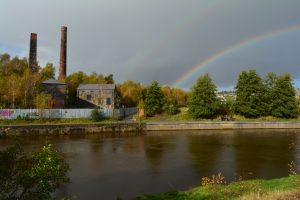11 Activity 3.1 – Tracking the Making of Toxic Heritage
Audrey Ricke

Associated Readings:
Chapter 12 Victoria Evia, Stantiago Alzagaray, and Javier Taks, Environmental and Embodied Agro-Toxic Heritage in Rural Uruguay: From Recognition to Transition to Sustainability Among Dairy Farmers
Possible Pairing: Chapter 5, Sarah May, “Heritage-Led Regeneration and the Sanitization of Memory in the Lower Swansea Valley.”
Targeted Skill:
Library Research, Archival Research, Digital Literacy, Analysis
Suggested Format:
Consider integrating activity as a small group project or individual semester-long project in an upper-division or graduate-level course. Set due dates for different deliverables or steps in the analysis.
Directions:
The goal of this activity is to trace how toxic heritage is made, unmade, and challenged, sometimes simultaneously, through public discourse and memories. Using internet searches and archival research, find old and contemporary academic journal articles, newspaper articles, news reports, and documentaries about the use of glyphosate in the region or country where you reside. Collect excerpts from different segments (general public, industry itself, government, NGO’s, and scientists) and individuals in society from different periods in time.
Analysis:
- Examine the discourse from these different segments about glyphosate to see how memory and heritage-making is unfolding:
- How are different sectors (general public, industry itself, government, NGO’s, and scientists) talking about it during different periods of time? What are some similarities or differences in what they are saying and not saying?
- In what ways, if any, do these discourses lead to the making, unmaking, or challenging of glyphosate as toxic heritage?
- Using your analysis of the discourses from these various sources, create a timeline, video/powerpoint montage, or other work of expression to capture the construction of toxic heritage , such as the agro-toxic heritage of glyphosate, in the country where you reside.

